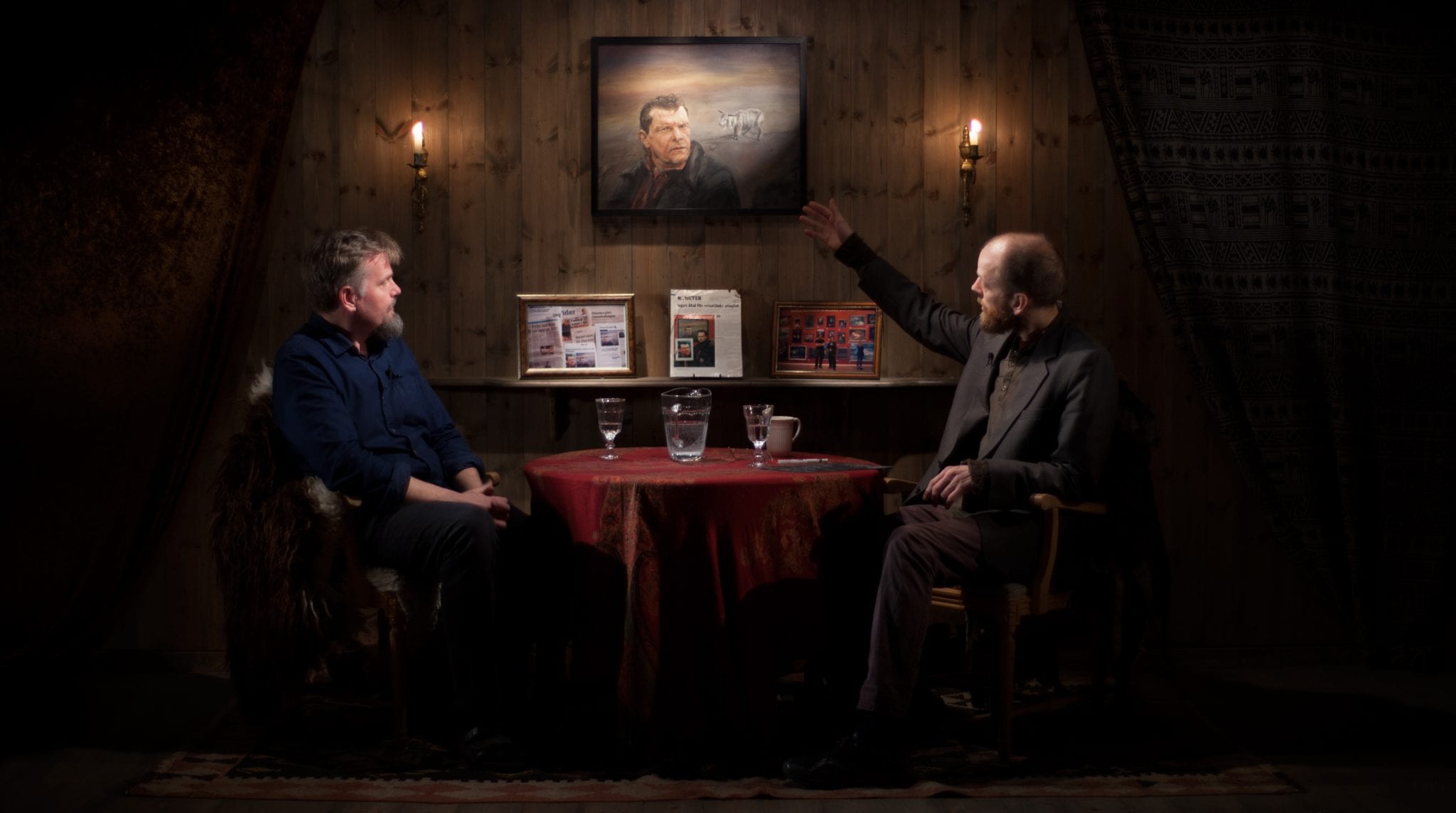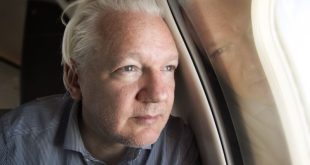The Herland Report features painter Marcus Andersson in the monthly TV programs from the Cave of Apelles, produced by Bork Spildo.
We examine the current situation for figurative painting and Kitsch with a comprehensive outlook on The Odd Nerdrum Classical School of Painting.
Politically motivated character assassinations has probably been the most popular method among the New Left in order to silence opposition from the majority population.

Herbert Marcuse, the father of the radical culture revolution in the 1960’s spoke openly in A critique of Pure Tolerance about the need to oppress the views of the majority population in order to succeed in revolutionizing Western culture.
The “curbing of freedom” for some groups – Conservatives, traditionalists – was a vital tool in order to radicalize society and change the traditional value system.
Read the story of the Swedish figurative painter, Markus Andersson on how the media and the art establishment managed to drag his painting “Swedish Scapegoats” (Svenska Syndabockar) all the way to the Supreme Court. This is the story of how character assassinations are done in modern Sweden.
A Succès de Scandale
Around the year 2005, Andersson complained to a jury for an exhibition that the field of
contemporary art was too narrow. One juror, The Romanian conceptual artist Dorinel
Marc, agreed with him and half a year later, Andersson exhibited 22 paintings at the
Museum of Modern Art in Stockholm as part of Marc’s installation.
“Did you have a name at that time?” Jan-Ove Tuv asks.
Markus Andersson shakes his head.
“This exhibition at the Modern Art Museum,” Tuv continues, “what kind of status does that
have?”
RELATED ARTICLES:
- Cave of Apelles on Figurative Painting in China: Cheng Wu.
- The repressive New Left and Marcuse’ desire to silence majority in the West – Hanne Nabintu
- The rebellion against Emptiness, by Hanne Herland. Foreword in Odd Nerdrum book Crime and Refuge.
- The New Left’ desire to silence the Majority – Nabintu, WND.
- Cave of Apelles on Why Competition is so Important for the Quality of Artwork.
“They say that in this exhibition – they have it every fourth year – they invite the fifty most
important contemporary artists,” Andersson says.
Markus Andersson is a Swedish figurative painter influenced by painters such as Anders
Zorn, Prince Eugene, Carl Larsson, and Bruno Liljefors, all of which have nature as a central
part of their paintings.

Most of his paintings were landscapes of Swedish landscapes. But his exhibition wall also
included works that depicted politically charged people – a series he called “Swedish
Scapegoats” – which was different from what he normally painted.
At first, the figurative wall received good reception among some critics who, according to
Andersson, praised Dorinel Marc for his “interesting paintings.” Andersson says that one
critic even wrote that the paintings were “wonderfully braindead.”
It took one month, he says, before the press began to realize what was actually going on.
“They started to say that it was nationalistic… kitsch paintings. They had all those buzzwords.”
The exhibition quickly evoked controversy in Sweden, especially among the media and the
art establishment, as it was neither aesthetically nor politically correct. The paintings were
figurative and without irony, while the people depicted were regarded as politically
suspicious by the media.
The Scapegoats
“I wanted to paint something that had been hidden from the media. The people were from
quite different backgrounds. There was no connection between them, except that the media
had used them as scapegoats, or that their voice had been silenced.” – Markus Andersson.
One of them, which ended up being the most controversial painting, was a painting of
Christer Pettersson, who was accused of murdering the Swedish Prime minister Olof Palme
in 1986. He was sentenced to lifetime imprisonment, but was later acquitted and released.
The media, however, continued to claim that he probably was the murderer.
“Christer Pettersson was from the lowest of the lowest part of the society. I think the
reason why they took him was that he was an easy target, and because he has an
archetypical look.” – Markus Andersson.
Another “scapegoat” portrayed by Andersson was a 17 years old Swedish boy called Daniel
Wretström, who was lynched and killed by a group of around twenty by-passers. The media
claimed that the reason why the boy was assassinated was that he was a right-wing
extremist.

“It is absurd to discuss what opinions that boy might have had. He was murdered
and lynched on the street in a horrible way. And what he thought and his private opinions
should not matter. It is as ridiculous as if a woman gets raped, one starts discussing that her
skirt was too short.” – Markus Andersson
There’s something rotten in the state of Sweden
The first reactions to the exhibition were epithets from the media and art critics. Not only did they react to the scapegoat paintings, they also reacted to a classical painting of a nude blonde woman in a Swedish landscape.
One critic said that when painting a blonde nude, one “idealizes the Nordic”, the implicit message supposedly being that “something else is
dirty, ugly and weak”. His painting of a boy by a rune stone was also attacked for having “Nazi connotations”.
For one of his “scapegoats”, his portrait of Christer Pettersson, Markus Andersson had painted after media pictures. One particular was taken by the photographer Jonas Lemberg, who belonged to an influential media family in Sweden. Lemberg reported Andersson to the
police for copyright infringement.
The police, however, did not take the case, as it obviously is no crime to paint from a photograph. “Then, they found a prosecutor, who did an investigation for eight months. But she also concluded that there had been no crime, no copyright infringement. At that time, I thought it was all over,” says Andersson. He could not have been more wrong.
Andersson ended up being interrogated at the police station. “It was absurd. My lawyer told me that I did not need to lie, because I had done nothing wrong. I told them that I found pictures in the newspaper and used them to paint from. The interrogation lasted for one and a half hour. Can you imagine? And this was at the police station, where they interrogate bank robbers, murderers… and painters!” – Markus Andersson.
In 2008, he was informed by mail that his case was obsolete. “So, they did not acquit you explicitly? They just concluded ‘we cannot touch him?” asks Jan-Ove Tuv. “Correct, and again I thought I was done with the case. But in 2013, five years later, I
received a new letter from the civil court. The photographer wanted a new process against me.” – Markus Andersson.
During a period of more than two years, the case went from district court (where he lost) to the court of appeals (where he won). But the photographer appealed again and one year later, the Supreme court accepted the case. “They accept very few cases,” says Andersson.

“This must be absurd for you,” says Jan-Ove Tuv, and elaborates: “You make this painting series about character assassination and hypocrisy… You can include a self-portrait in the series!”
The verdict from the Supreme court , however, was clear as day: “The statement from the Supreme court was like a legal precedent: You can use, or get inspiration, from media pictures, as long as you make something unique. It is that simple.” – Markus Andersson.
“Students often ask me if they can paint a rabbit from a picture in a book, for example. Now I have the verdict I can show them!” says Andersson, bursting into laughter.
RELATED POSTS:
- Nerdrum Kitsch designer, Eline Dragesund, shapes men into Cathedrals.
- How the State Established Fine Art: Cave of Apelles from Nerdrum School.
- Watching America Collapse. Culture of Hatred. Paul C. Roberts.
- True meaning of Christianity transcends Race, Culture, Creed and Class.
- Cave of Apelles: Ayn Rand’s Aesthetics Serves as Antidote to Kant, we need personal responsibility.
Freedom of Speech is Inconvenient
“You were stripped of all talent in the newspaper, you were accused of being politically suspicious. In short, the partisan blog mob went after you. It was not given that you would survive this,” says Jan-Ove Tuv.
“In today’s society, people accept accusations too early, without a real fight, withoutdefending themselves as hard as they can,” says Andersson and continues:
“If they can scare people and make them fear expressing themselves, it would stop every kind of interesting creativity. For example, in a normal bookshop today, we don’t have any brave writers. Or, it looks like we do not have any, but I know that we do. Actually, I know some of these brave writers, but their books are not sold in the book shops in today’s society.” – Markus Andersson.
“The same people honor Solzhenitsyn, who had to hide his manuscripts from the government. It’s a heroic act if it happens there, but not if it happens here,” says Jan-Ove Tuv.

“The situation where one doesn’t understand the proportion of crimes, knowing what is actually serious and not, is a problem,” says Tuv, as he emphasizes the absurdness of Andersson’s painting ending up in the Supreme court.
“There are many people who don’t like freedom of speech, because it is somewhat inconvenient for them. Freedom of speech is inconvenient,” says Andersson.
“Has this ever scared you, or prevented you for doing something in fear of reprisals?” asks Jan-Ove Tuv.
“I’ve not been scared personally. But I’m scared of this dark movement where freedom of speech is not that important anymore. I’m scared in general for the future, for society,”
Andersson concludes.
The level of censorship in social media and search engines is all-time high. Do like thousands of others, subscribe to The Herland Report newsletter here!
Led by Scandinavian bestselling author, Hanne Nabintu Herland, The Herland Report news and opinion website provides independent analysis from leading Western intellectuals and ground breaking YouTube interviews, cutting through the mainstream media rhetoric. It is a great place to watch interviews and read the articles of leading intellectuals, thought leaders, authors and activists from across the political spectrum. The Herland Report believes in freedom of speech and its editorial policy resides above the traditional Left vs Right paradigm which we believe has lost its relevance and ability to describe the current driving forces in Western politics.








